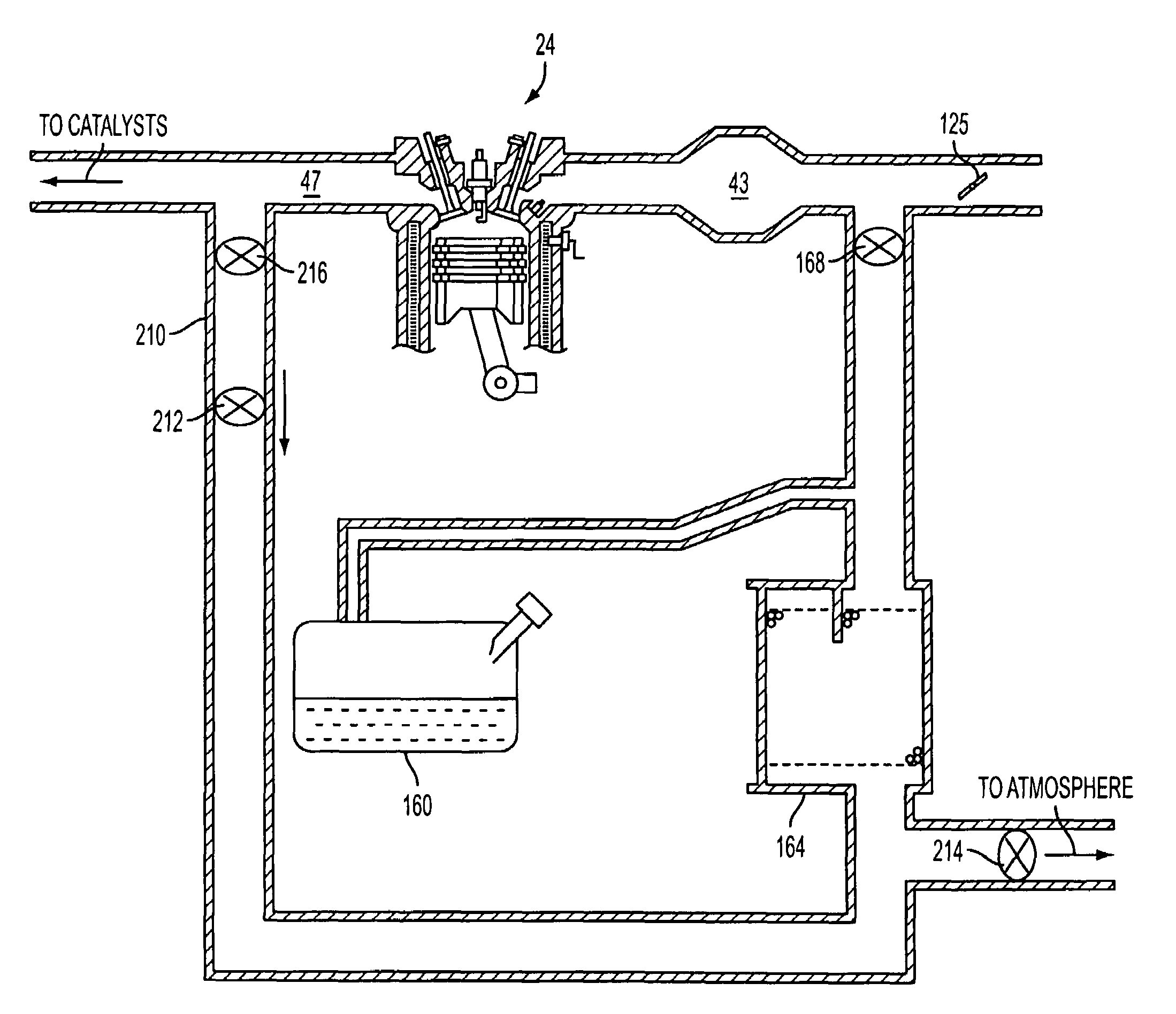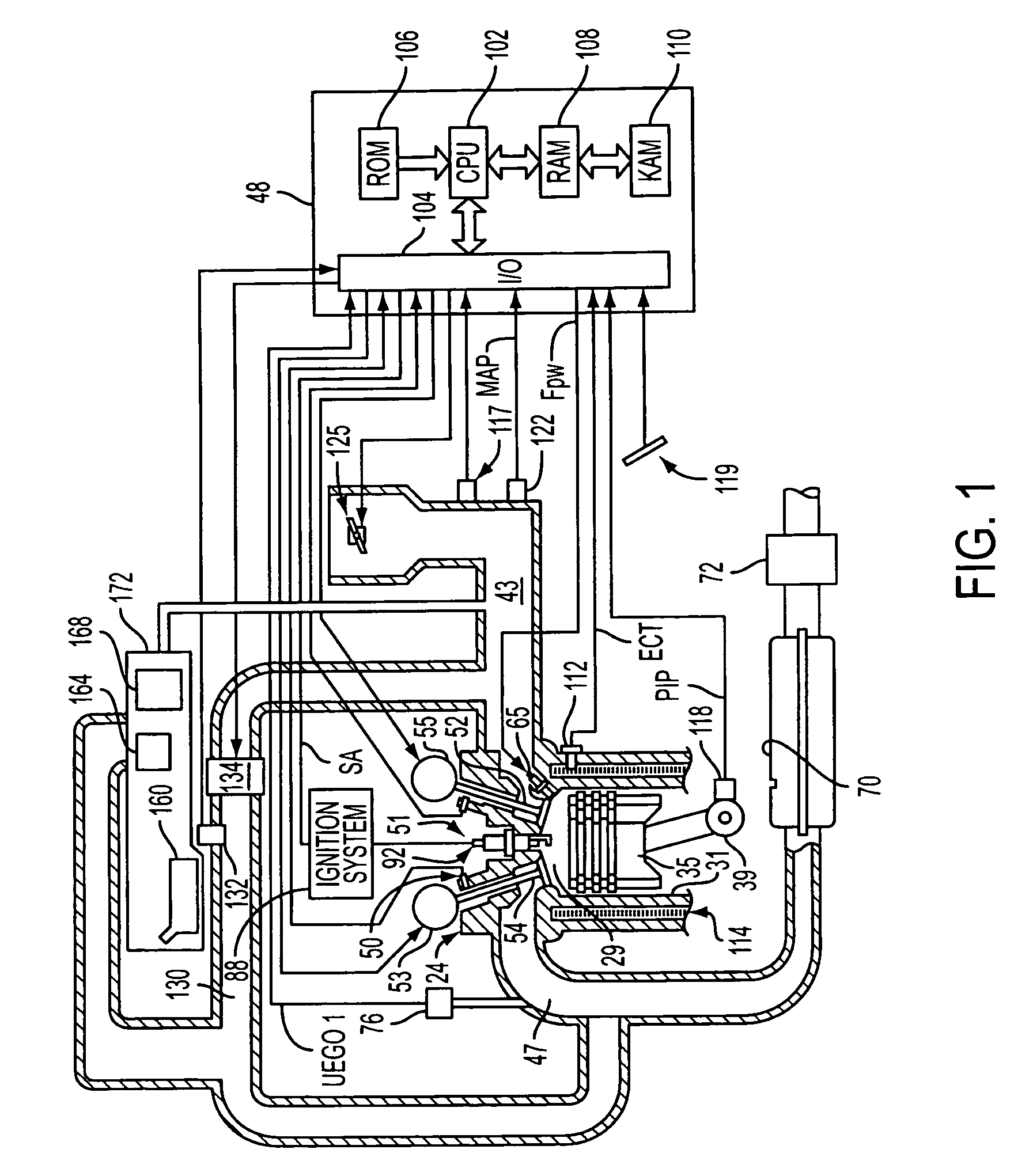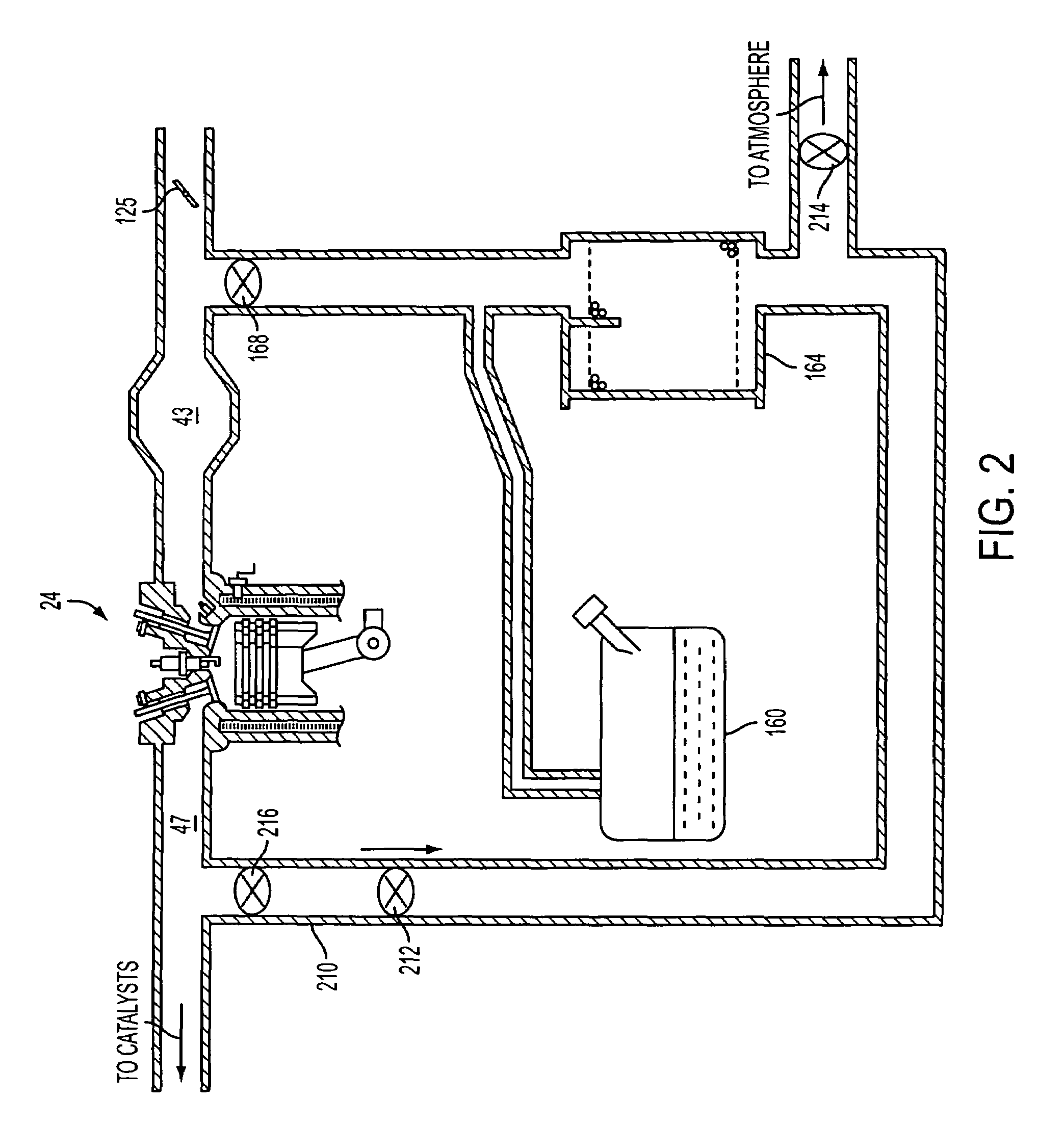System and method for purging fuel vapors using exhaust gas
a technology of exhaust gas and fuel vapor, which is applied in the direction of liquid fuel feeders, combustion air/fuel air treatment, machines/engines, etc., can solve the problems of increased engine pumping work, increased parasitic losses, and loss of fuel savings, so as to facilitate certain emission control activities and reduce the emission of such vapors
- Summary
- Abstract
- Description
- Claims
- Application Information
AI Technical Summary
Benefits of technology
Problems solved by technology
Method used
Image
Examples
Embodiment Construction
[0010]FIG. 1 shows an example engine 24 as a direct injection gasoline engine with a spark plug; however, engine 24 may be a port injection gasoline engine, or a diesel engine without a spark plug, or another type of engine. Internal combustion engine 24 may include a plurality of cylinders, one cylinder of which is shown in FIG. 1, which is controlled by electronic engine controller 48. Engine 24 includes combustion chamber 29 and cylinder walls 31 with piston 35 positioned therein and connected to crankshaft 39. Combustion chamber 29 is shown communicating with intake manifold 43 and exhaust manifold 47 via respective intake valve 52 and exhaust valve 54. While only one intake and one exhaust valve are shown, the engine may be configured with a plurality of intake and / or exhaust valves.
[0011]Engine 24 is further shown configured with an exhaust gas recirculation (EGR) system configured to supply exhaust gas to intake manifold 43 from exhaust manifold 47 via EGR passage 130. The am...
PUM
 Login to View More
Login to View More Abstract
Description
Claims
Application Information
 Login to View More
Login to View More - R&D
- Intellectual Property
- Life Sciences
- Materials
- Tech Scout
- Unparalleled Data Quality
- Higher Quality Content
- 60% Fewer Hallucinations
Browse by: Latest US Patents, China's latest patents, Technical Efficacy Thesaurus, Application Domain, Technology Topic, Popular Technical Reports.
© 2025 PatSnap. All rights reserved.Legal|Privacy policy|Modern Slavery Act Transparency Statement|Sitemap|About US| Contact US: help@patsnap.com



